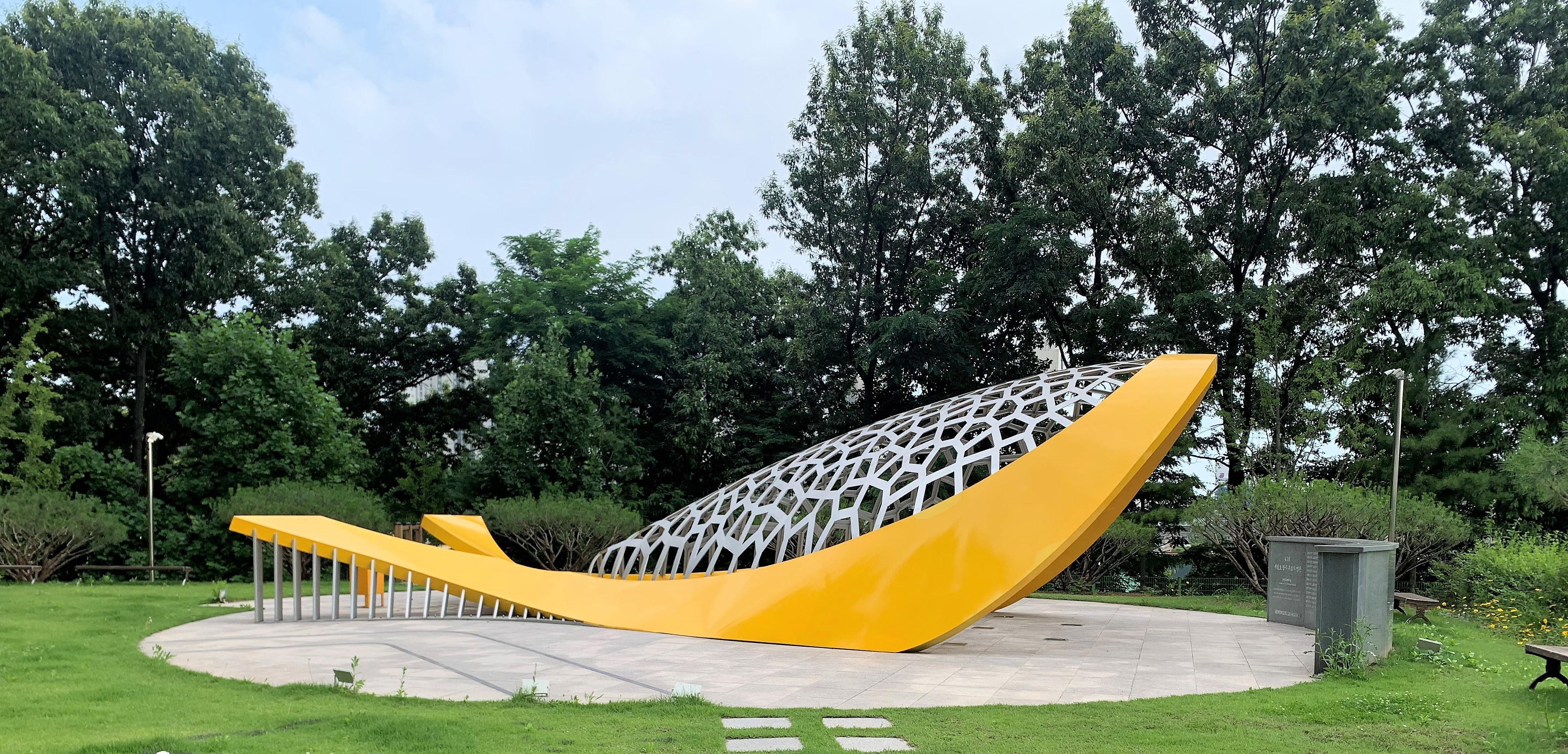
By Hanan Wahabi, one of the Memorial Commission's community representatives for bereaved family members
As part of the Grenfell Tower Memorial Commission’s research process, we’ve been in touch with several memorials across the UK and overseas including Manchester Glade of Light, Aberfan Memorial Charity, 7 July Memorial and 9/11 Memorial & Museum.
Earlier this summer, as part of this process, I attended the Disaster Haggyo 2023 Conference in Korea. I was invited to address the conference to share my experiences of the process to memorialise the Grenfell Tower tragedy.

It was also an opportunity for me to visit the memorials to those who lost their life in the sinking of MV Sewol passenger ferry in 2014. This was South Korea’s greatest maritime tragedy. It claimed the lives of 304 people, including 250 students and 11 teachers from Danwon High School in Ansan.
The parallels with Grenfell are striking, including a stay-put policy which failed, and multiple failures by public and commercial agencies tasked with ensuring passenger safety. This further complicated the path to justice and led to inaccurate reporting in the media.
There are several official memorials to the tragedy, often decorated with yellow ribbon. Yellow is the symbolic colour used to mark the tragedy in the way that green has become synonymous with Grenfell. The use of digitalisation in the memorials is really effective and inspiring, and helps support a memorial spread over different sites.
The main memorial is a museum – the 4.16 Memorial Classroom. All the fixtures and fittings from the original classrooms were removed and painstakingly recreated at a site near the school. The desk of each child who passed is decorated with their photos as well as personal effects curated by their family. A QR code on each desk links to a digital memorial site with individual accounts of each child. Empty desks represent those who survived. The floor has a special surface to prevent dust and contamination so that the classrooms can be preserved over the longer term. On the roof of the school is a memorial garden.

Tours are conducted by bereaved mothers wearing yellow high-vis jackets, while bereaved fathers guide visitors at the ferry port, close to where the disaster happened.
The design of the memorial includes spaces for each family to curate their own memories of their child. It includes an installation in the school corridors of memory lockers illuminated to display personal belongings of individual children.

The yellow ribbon symbol has also been used in a beautiful sculpture of a whale, which overlooks the school playground. At its tail is a yellow postbox where families and other visitors are invited to leave tributes. These are then laminated and incorporated into a display outside the school.
As a teacher, I think one of the most striking ways in which the tragedy has been memorialised is its incorporation into the national curriculum, as in Wales with the Aberfan disaster. And, in a very touching tribute, the children who passed were posthumously granted their degrees at the time when they would have graduated.

Ansan is a long way from North Kensington, but the pain and suffering of the bereaved families mirrors our own. I was profoundly grateful for the opportunity to meet them and learn about their experiences in building a memorial to remember their loved ones.
As I have learnt from other sites, memorialisation can take many forms. I was humbled by the Ansan bereaved families’ fight for justice, which has brought important changes in Korean legislation and its education system to protect future generations. It was inspiring to see how the families are able to have such close, personal involvement with the memorial to their children.
I would like to thank Professor Knowles of the Korea Advanced Institute of Science and Technology, and Dr Wonyong Park of Southampton University for inviting me to Korea, his PhD students who took time out of their summer break to provide support and of course, the bereaved families of Ansan for showing me around the memorials and sharing their experiences. I look forward to continuing the conversation as we move towards creating a memorial for Grenfell.
